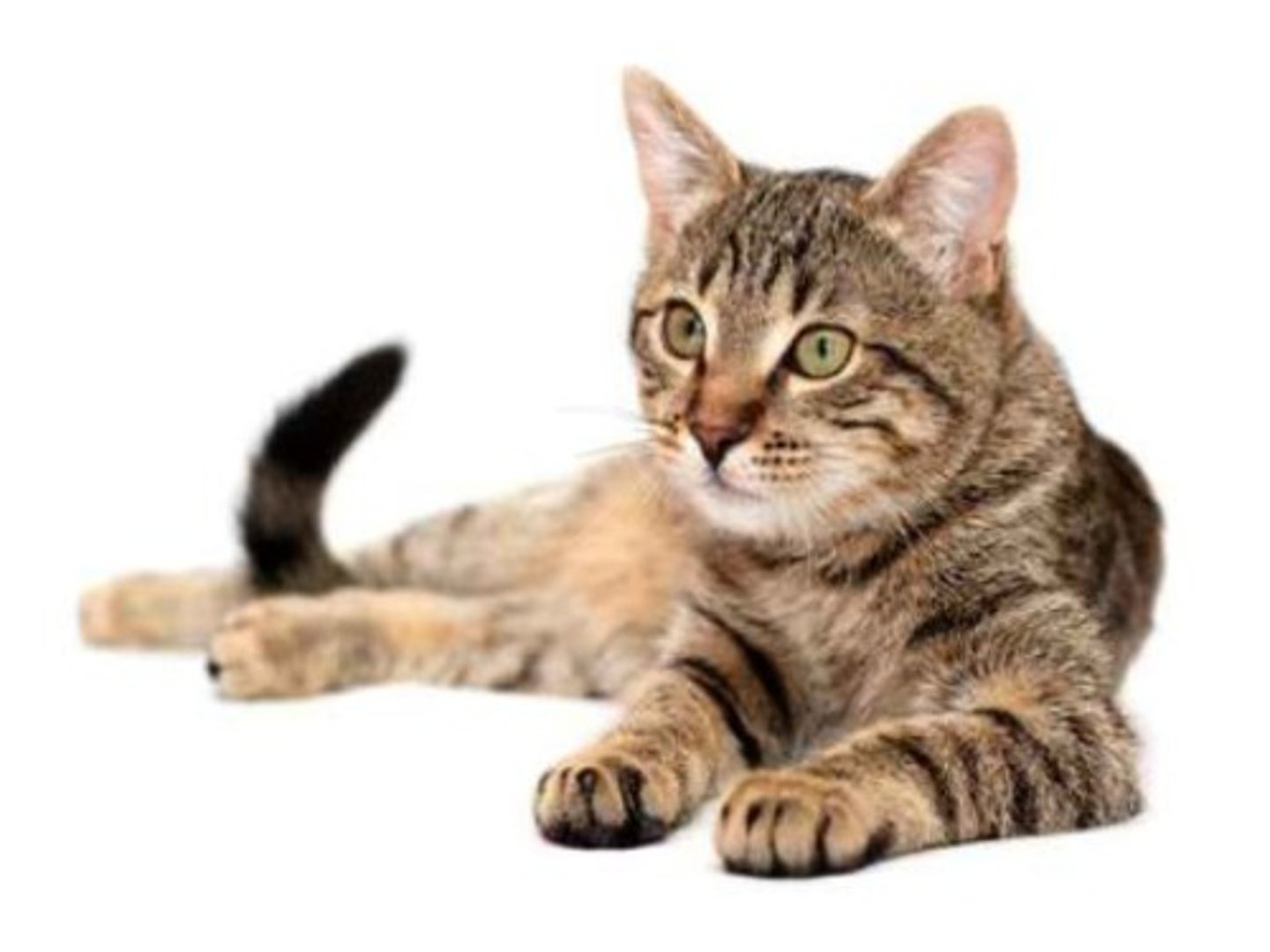Non-Avian and Avian dinosaurs
1/48
There's no tags or description
Looks like no tags are added yet.
Name | Mastery | Learn | Test | Matching | Spaced |
|---|
No study sessions yet.
49 Terms
Class Aves
this class is made of birds
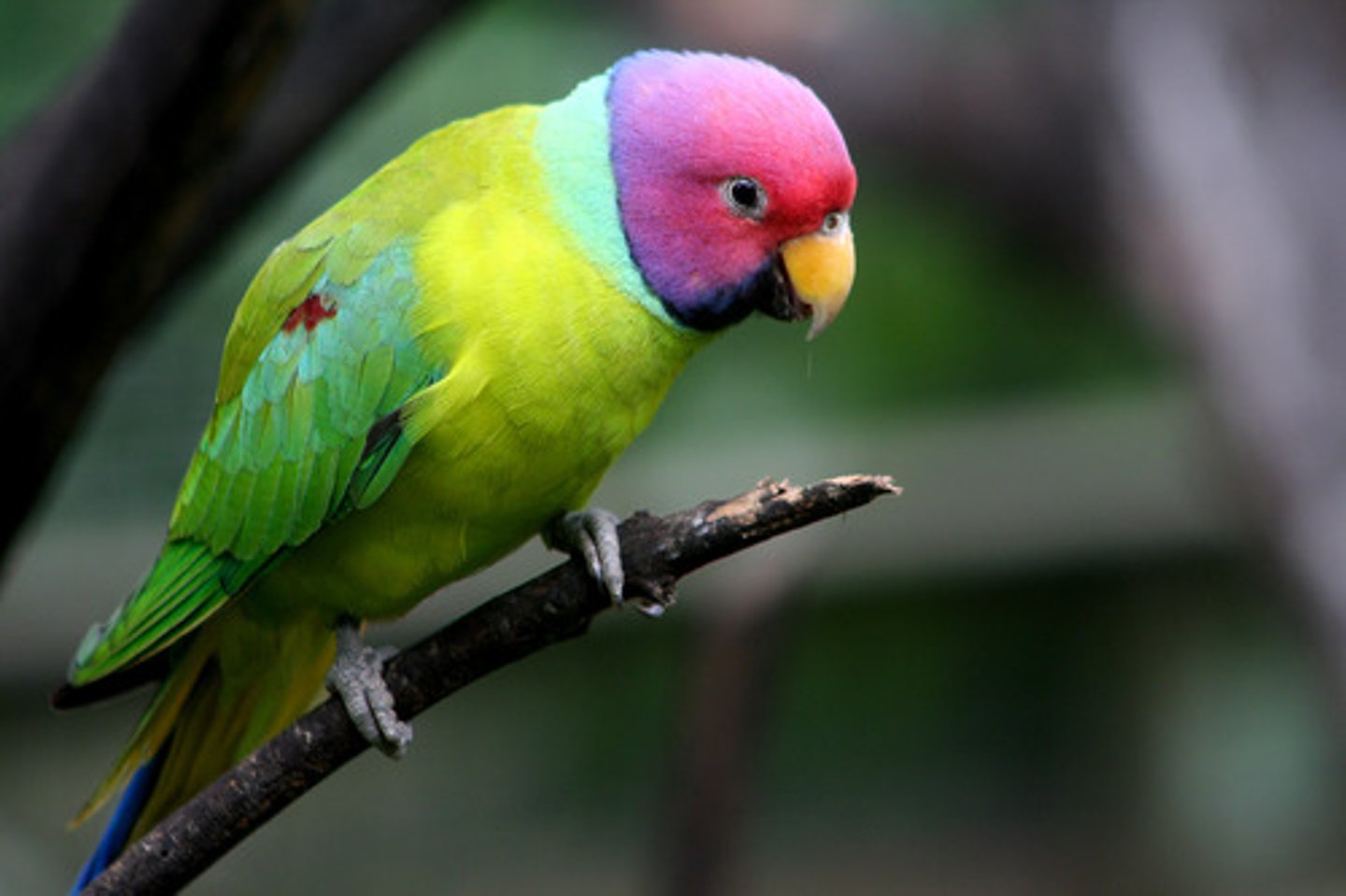
What are birds the direct descendent of?
Theropod dinosaurs
-nested within archosaurian diapsid reptiles
Ornithischian (Dinosaurs)
These are "bird-hipped" dinosaurs
-pelvis w/ illium, ischium, and pubis
-pubis points backwards and runs parallel w/ ischium
-birds also have backward pointing pubis (due to convergence)
-many groups
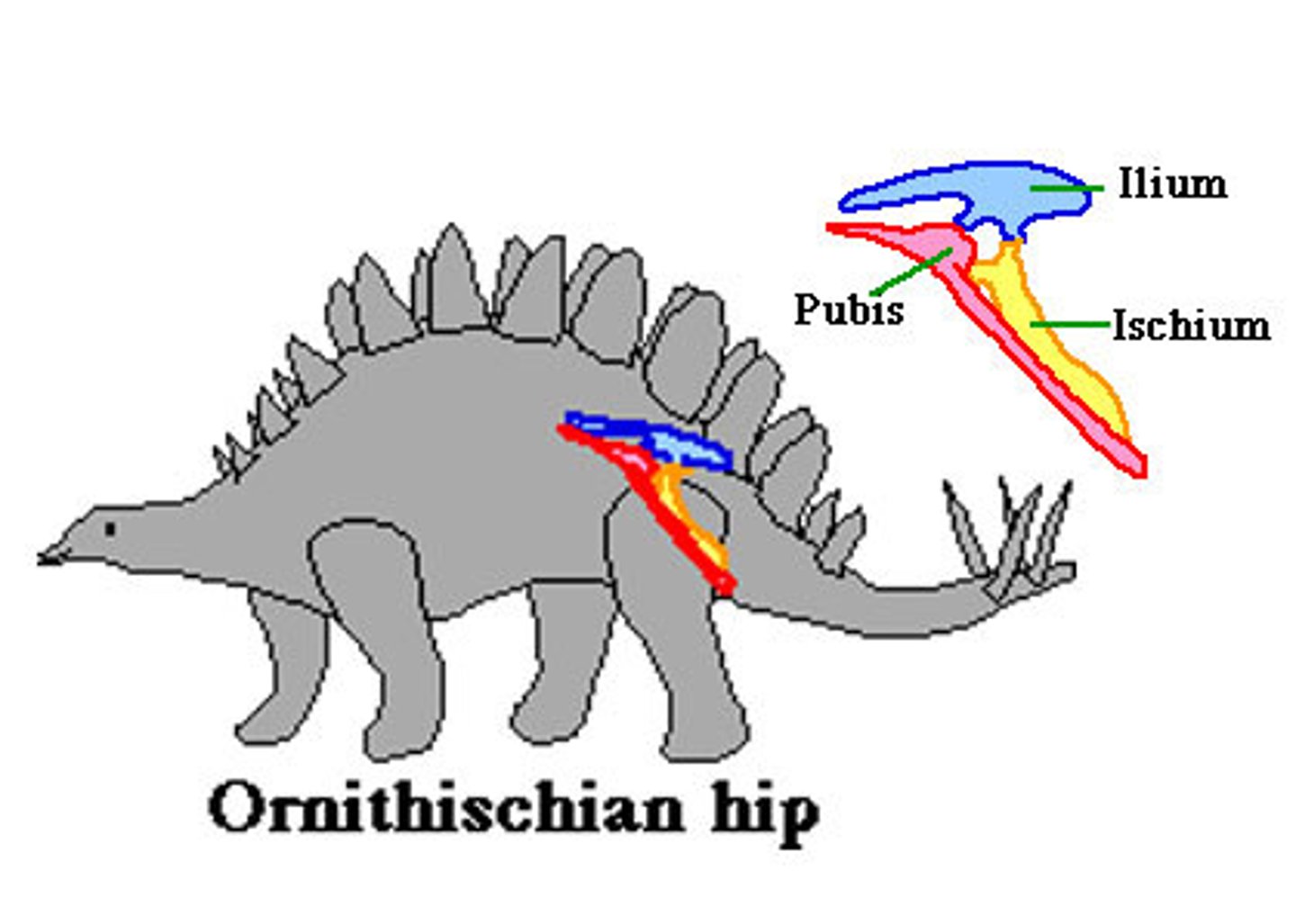
Bird hipped dinosaurs, Ornithischians
1. Hadrosaurs
2. Ceratopsia
3. Pachycephalosauria
4. Stegosauria
5. Ankylosaur
Saurischian (dinosaurs)
These are "lizard-hipped" dinosaurs
-pelvis w/ ilium, ischium, and pubis
-grasping hand
-asymmetrical fingers
-mobile neck
-sauropods and theropods
-birds are derived from this group

Sauropods
These are huge, 4 legged, long necked/ long tailed, herbivores that thrived in the Jurassic
-Lizard hipped (Saurischian)
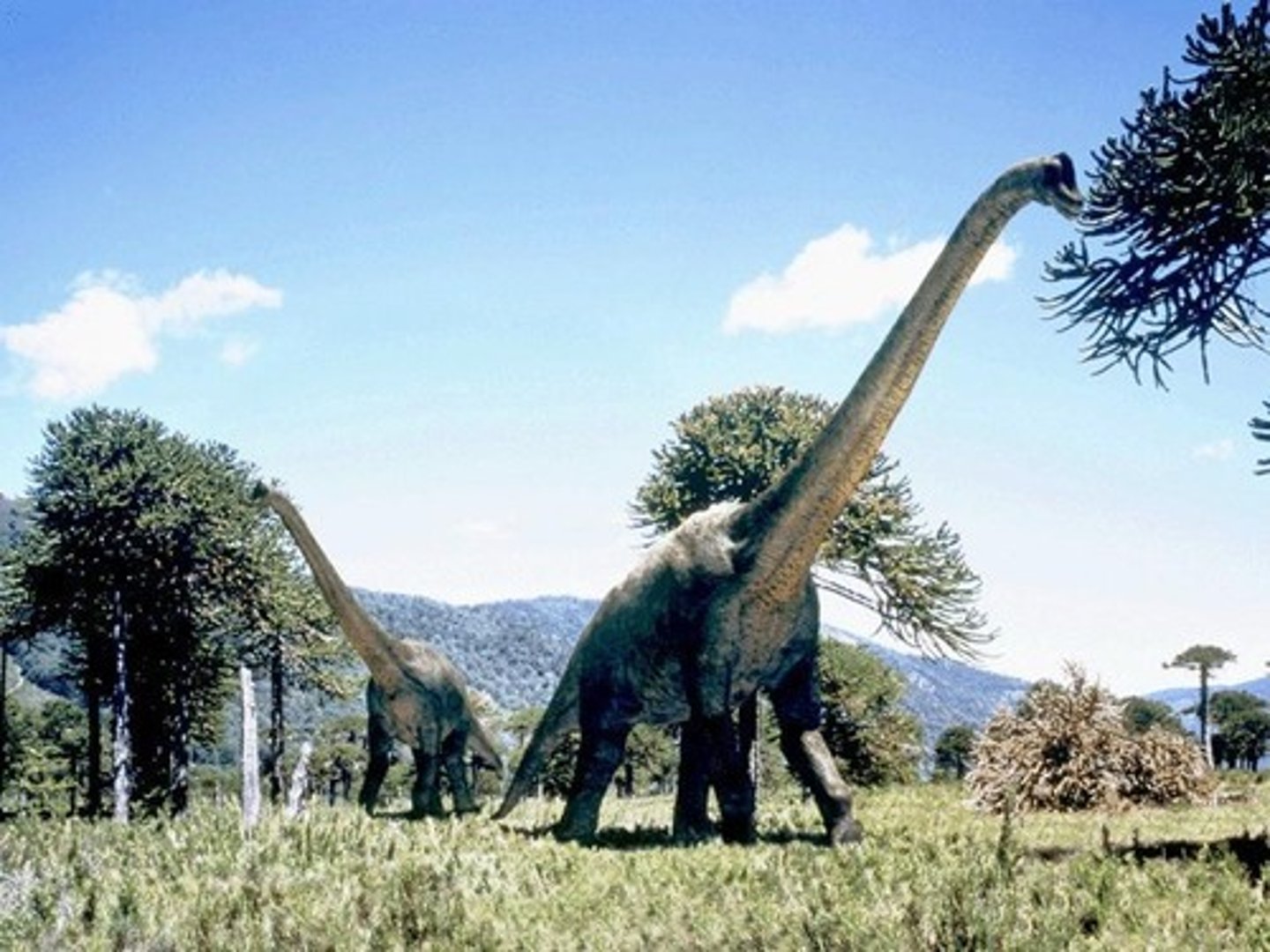
Theropods
A group of relatively small, bipedal, carnivorous dinosaurs
-Lizard hipped (Saurischian)
-Deinonychus
-Spinosaurus
-ceolophysis

Archaeopteryx
this is a genus of an extinct early bird
-Archaeopteryx lithographica
Archaeopteryx lithographica
this is an extinct bird which shows an evolutionary transition between ancestral dinosaurs and modern birds.
-discovered in 1861 Solnhofen Limestone, Bavaria
-Now dated to Late Jurassic, 147 mya
-had feathers, long tail, and teeth
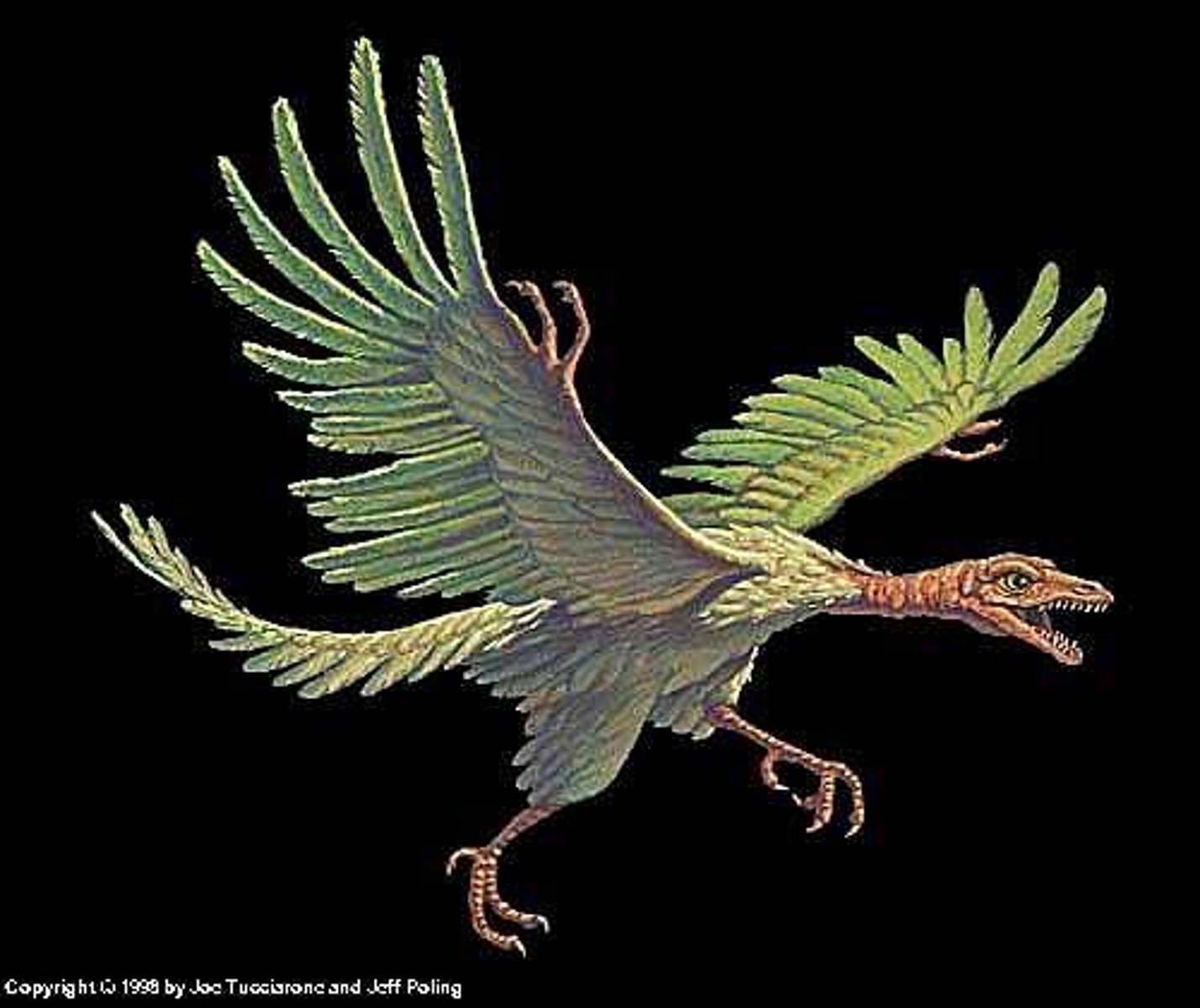
what bird features are present in dinosaurs?
features:
1.feathers
2.furcula (wishbone)
3.Pneumatic (hollow) bones
4.Tridactyl foot w/ big toe pointed backwards

tridactyl (foot)
term for foot w/ 3 toes forward, 1 back

endothermic (animal)
term for animal who generates heat internally to maintain a constant body temperature
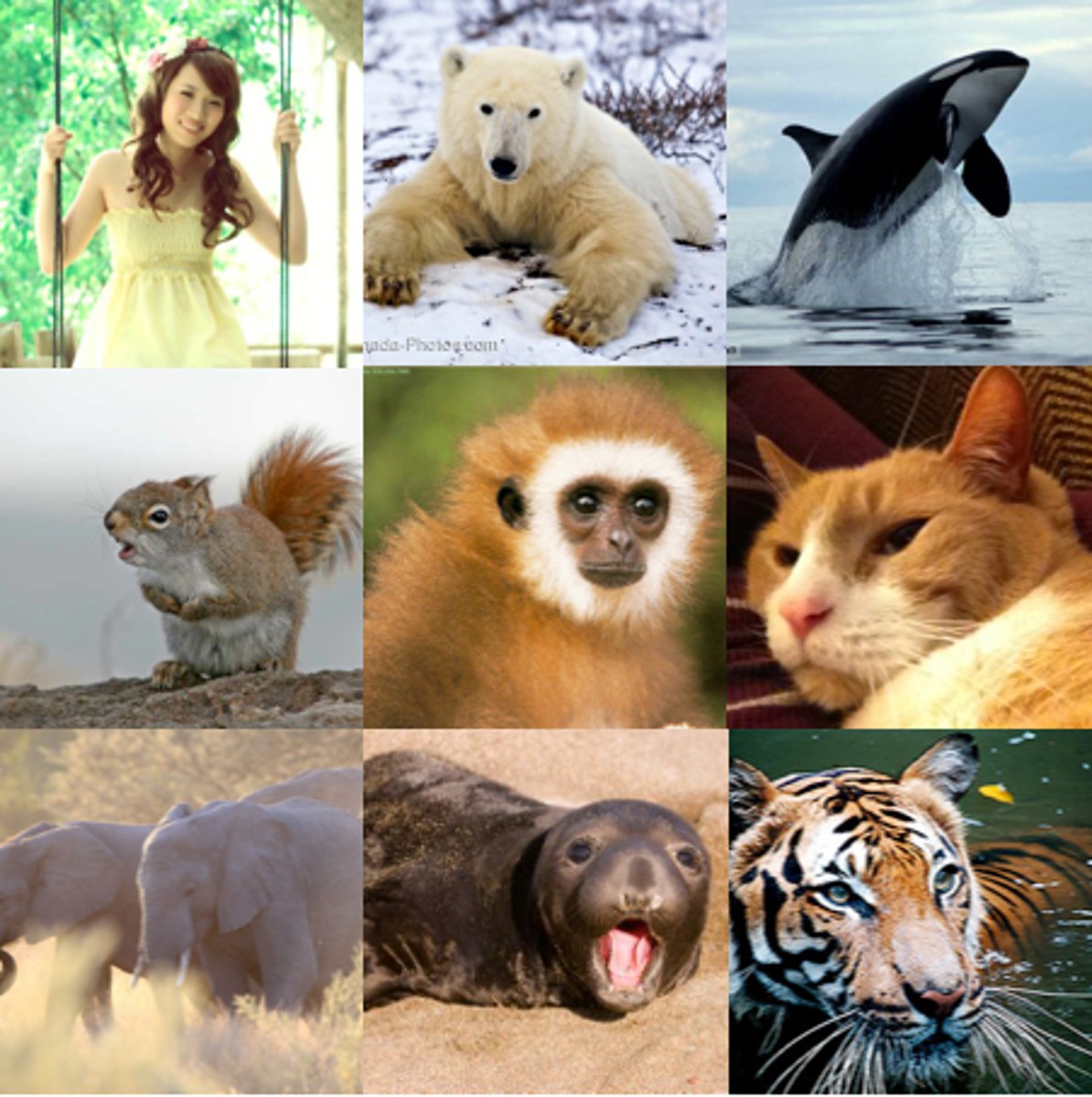
exothermic (animal)
term for animal that relies on external heat sources for thermoregulation
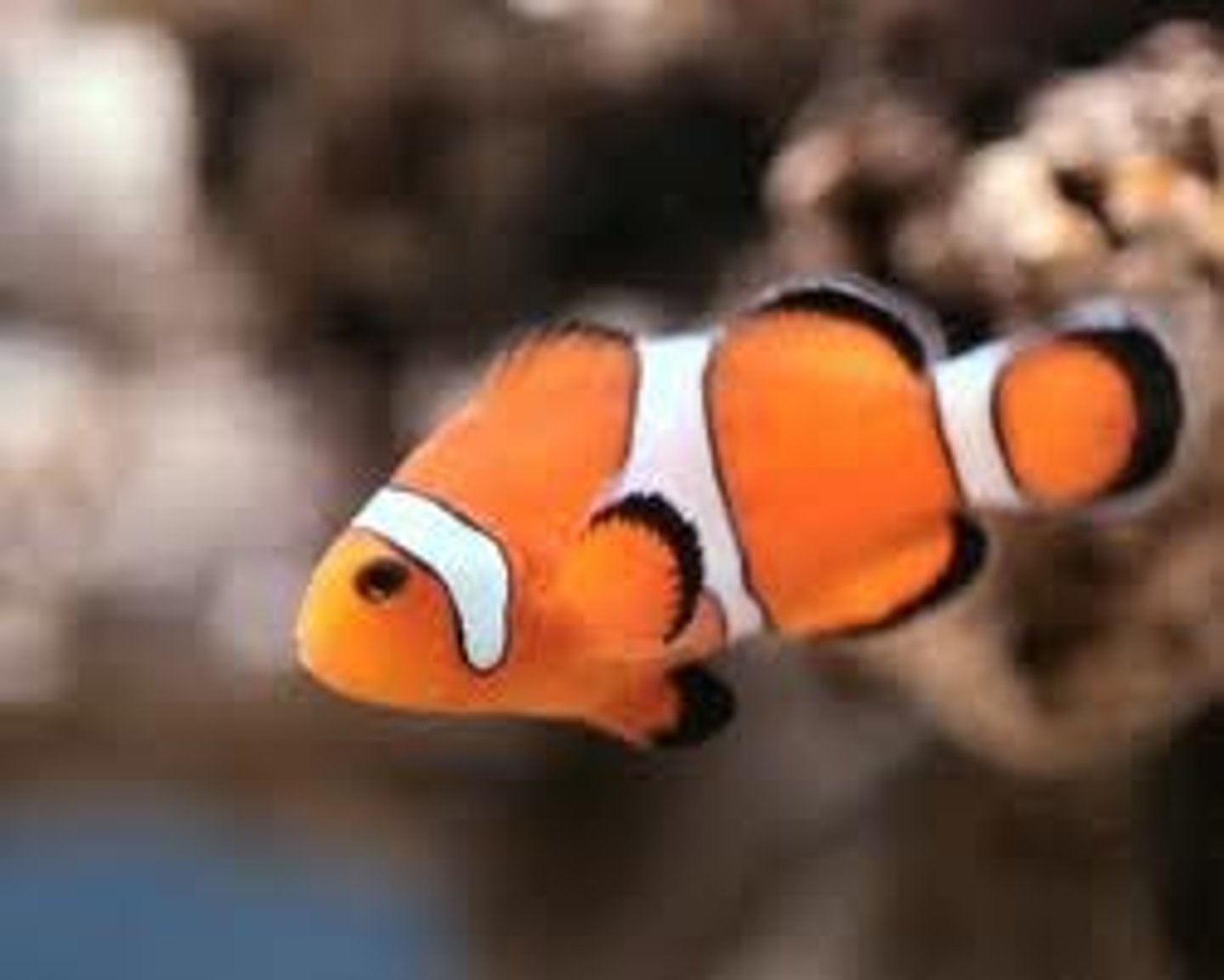
End cretaceous mass extinction
(aka cretaceous paleogene extinction) this happened 65 mya, caused the extinction of most dinosaurs
-chicxulub crater
-volcanism in deccan traps (may contributed)
Paleognathous birds
this is a group of birds; "old jaws" in Greek, characterized by a distinctive palate (mouth) structure. This group includes flightless birds like ostriches, emus, and kiwis
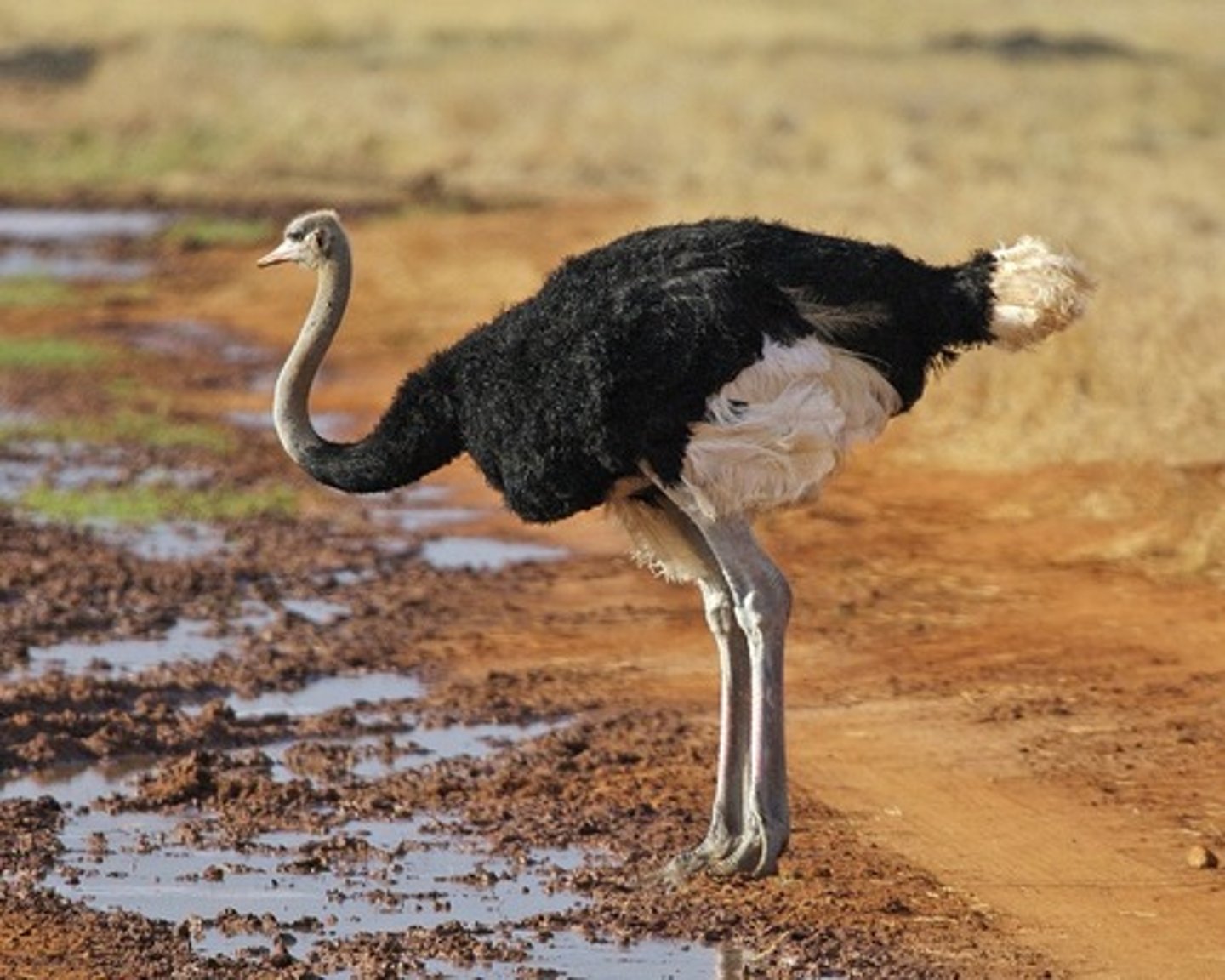
Neognathous birds
this group consists of modern birds, including flying birds and some flightless ones like penguins
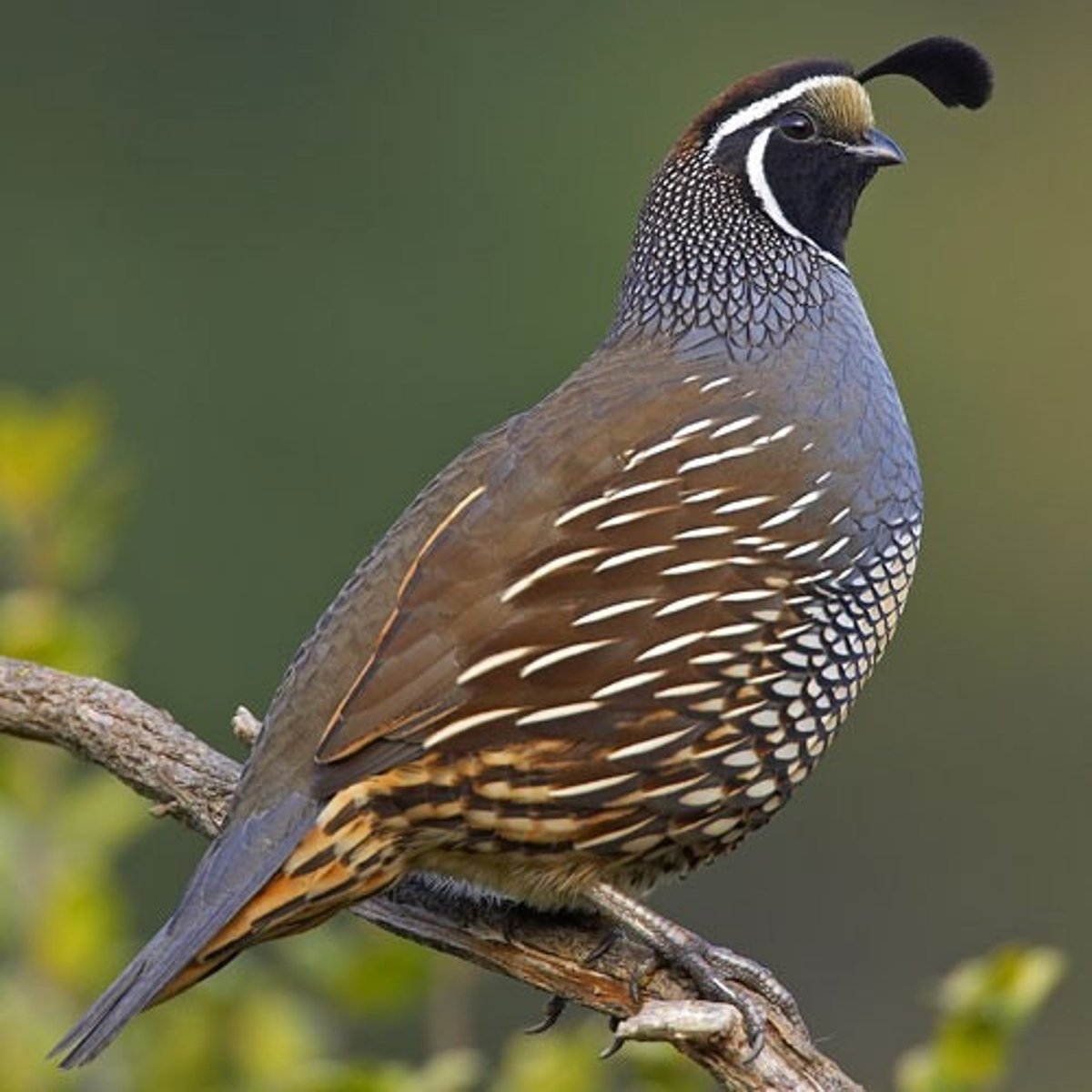
Pygostyle
Term for a reduced tail in birds
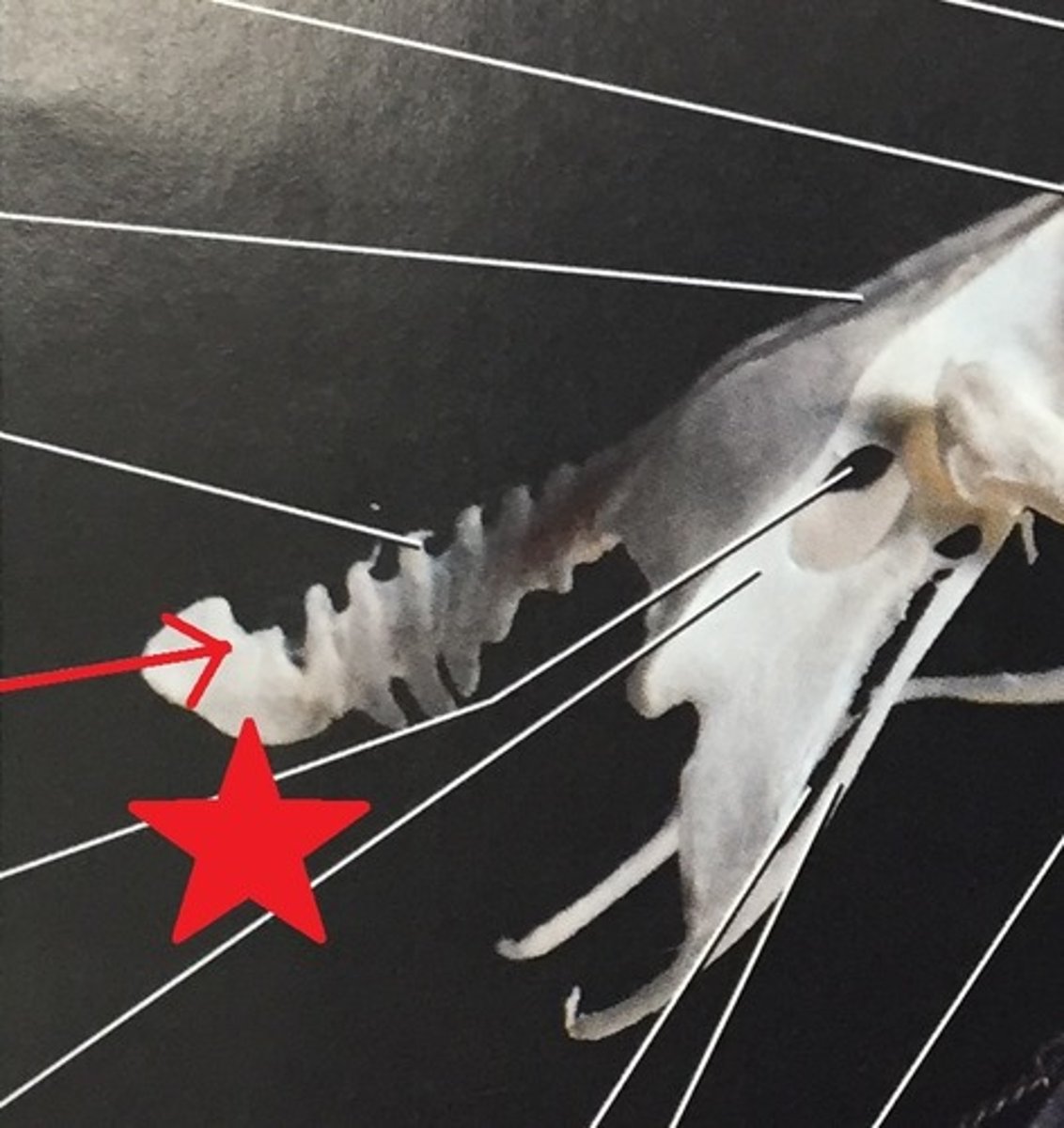
Keeled sternum
this is a prominent, blade-shaped ridge on the sternum (breastbone) of birds, serving as an anchor for powerful flight muscles
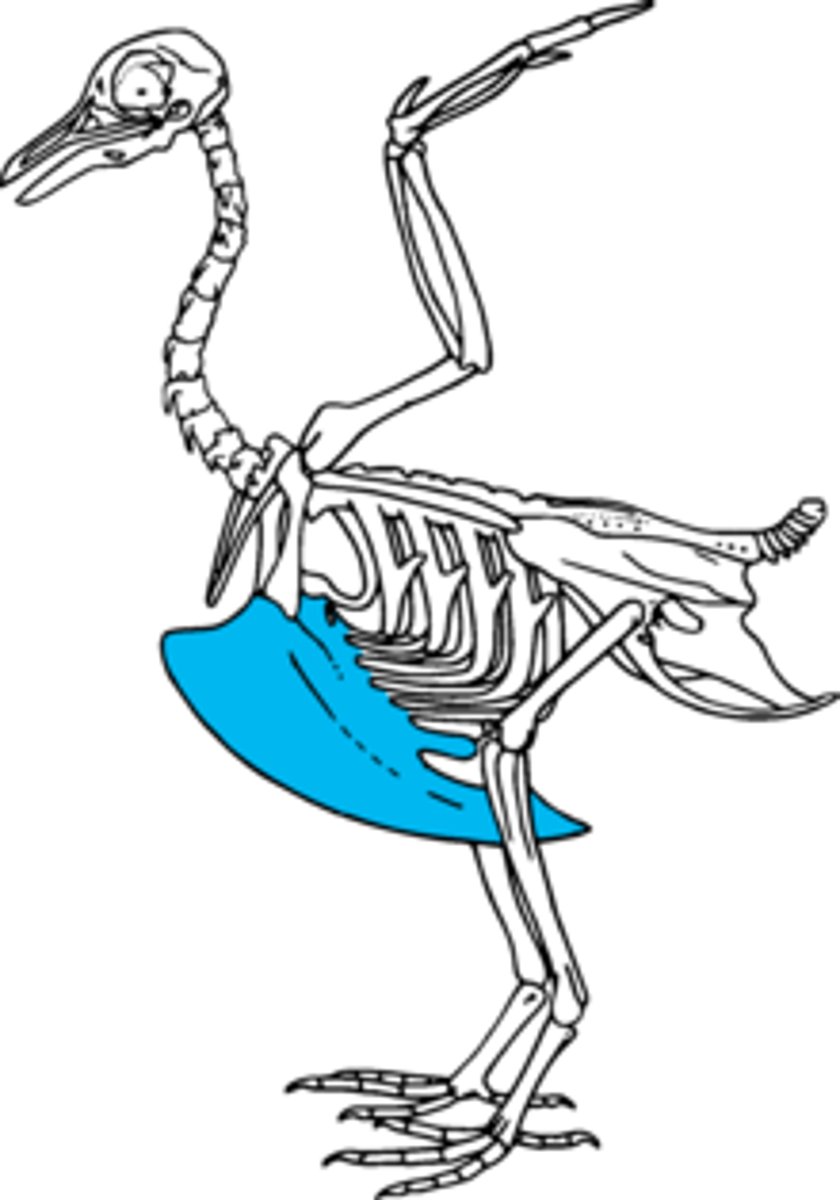
Furcula
this is the wishbone, the fused clavicles of birds

carpometacarpus
this is a bone found in the hands of birds. It results from the fusion of the carpal and metacarpal bone
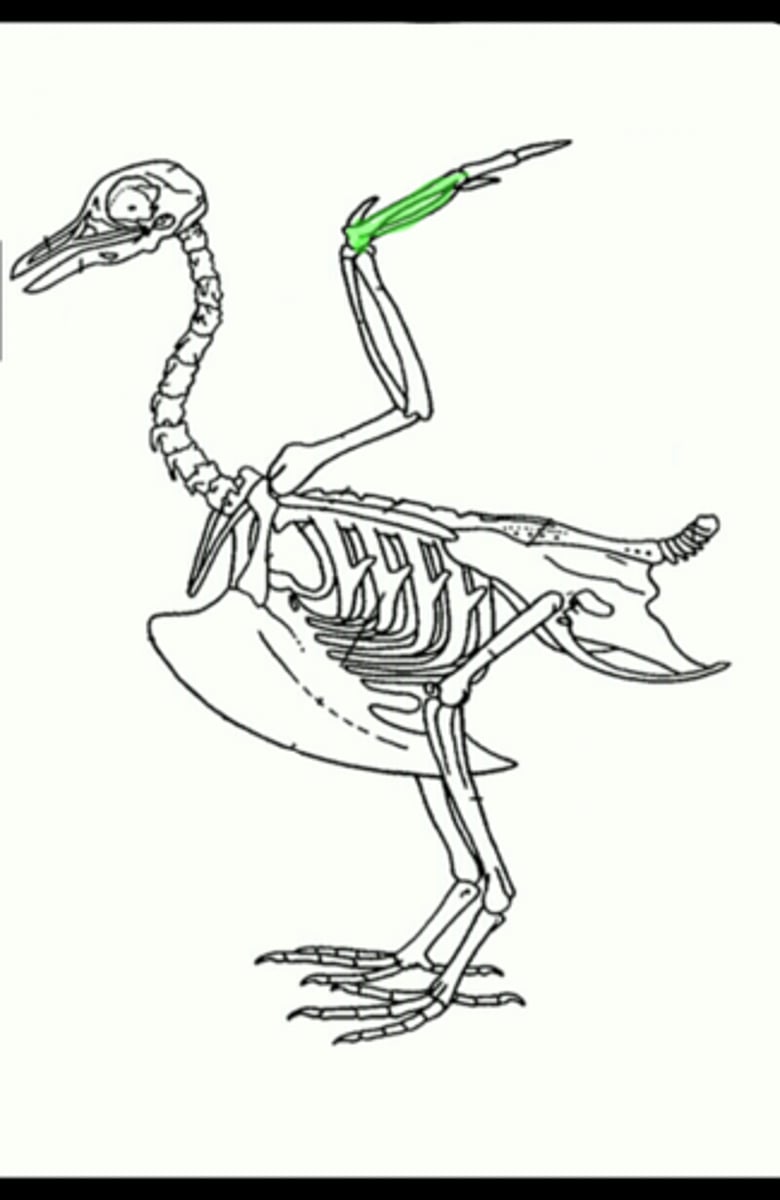
tibiotarsus
the single bone formed by fusion of the tibia with some of the tarsal bones
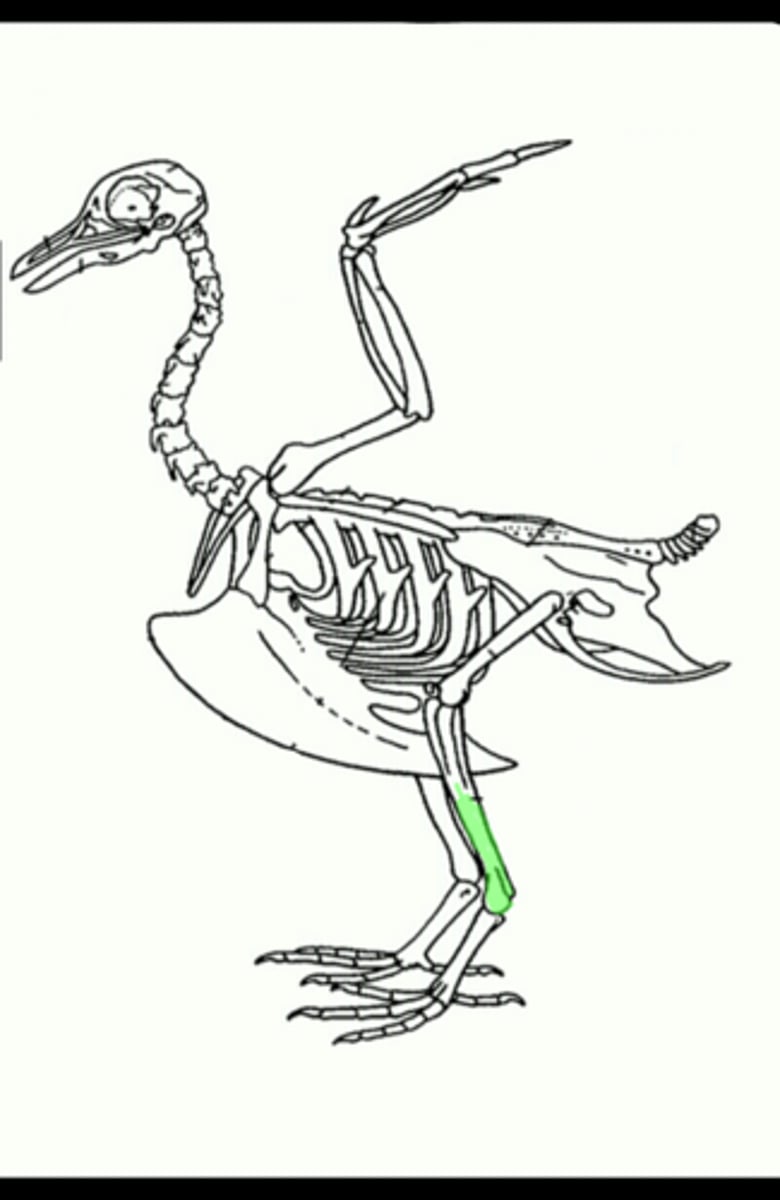
Tarsometatarsus
a long bone in the lower leg of birds and some reptiles, formed by fusion of tarsal and metatarsal structures
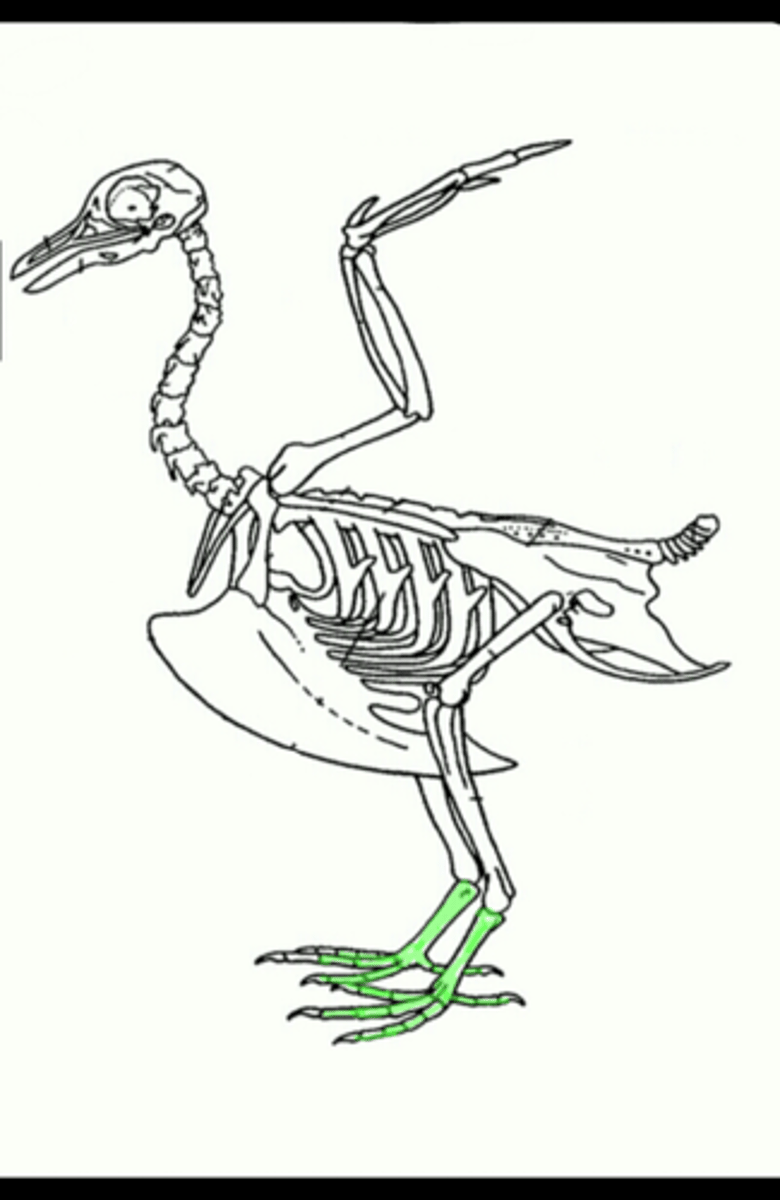
Pneumatic bones
these are hollow bones which are connected to the bird's respiratory system and are important for birds to be able to breath. Examples of pneumatic bones are the skull, humerus, clavicle, keel (sternum), pelvic girdle, and the lumbar and sacral vertebrae.
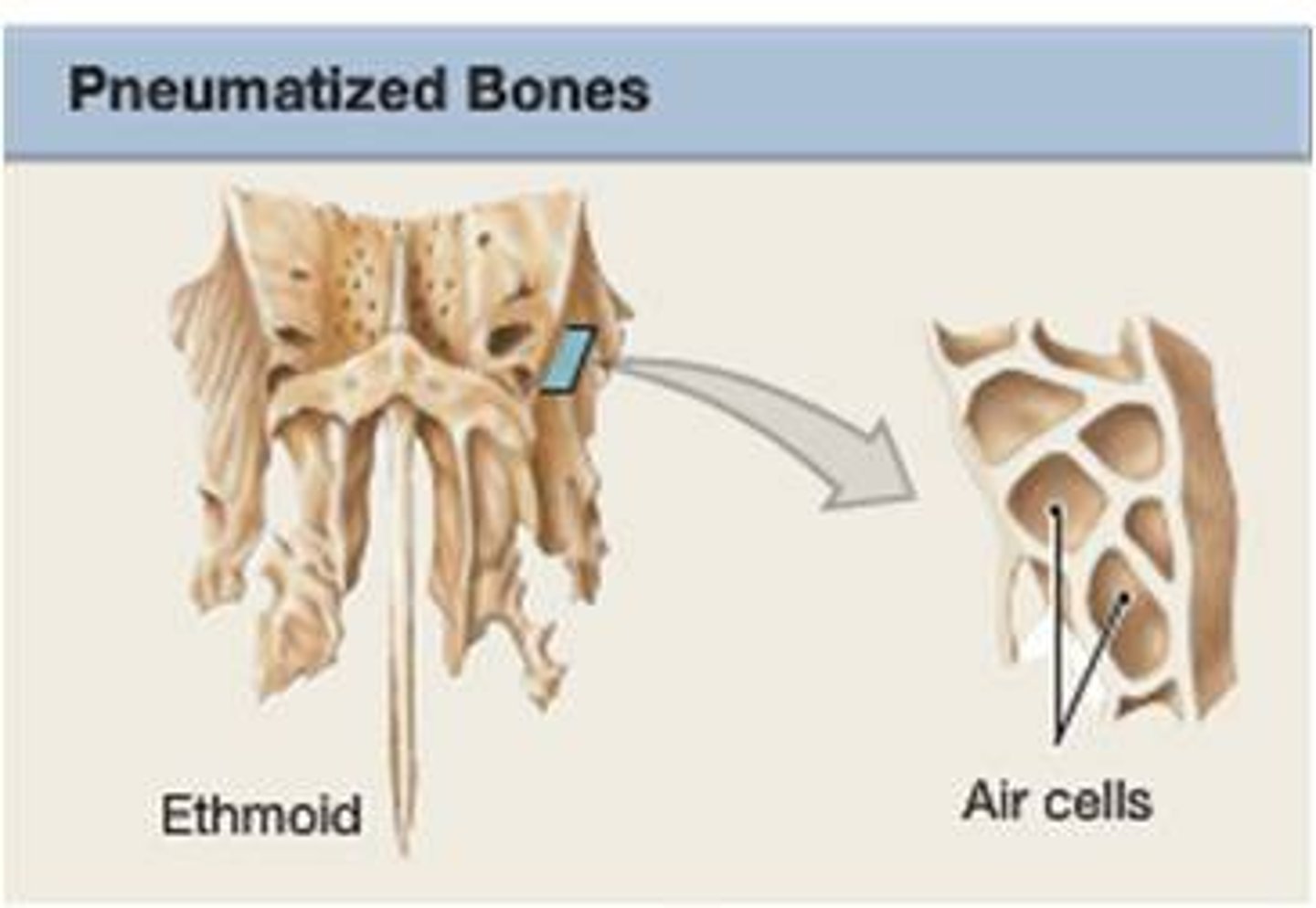
Feathers
these have high tensile strength, lightweight
-contour, flight, down
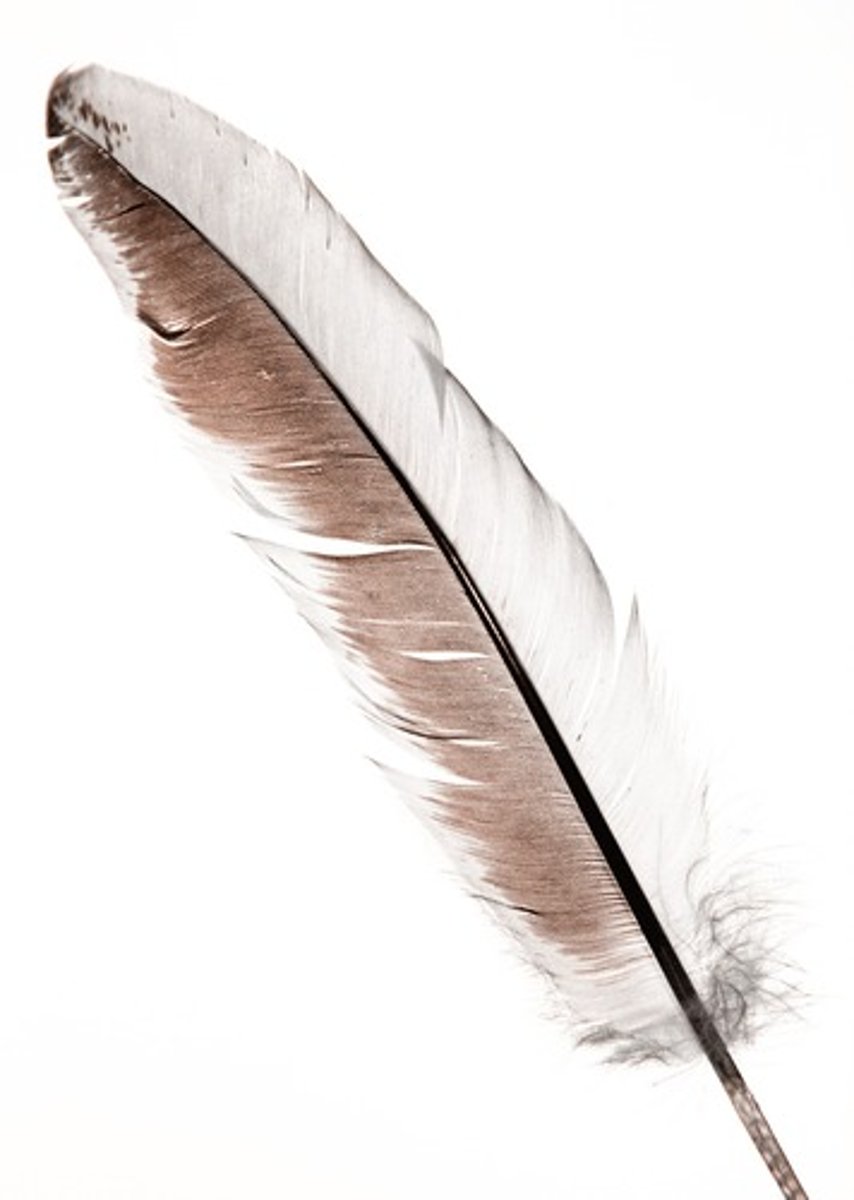
Contour feathers
these are large feathers that give shape to a bird's body and help with flying
-central quill becomes rachis/shaft, covered in barbs and barbules that form a vane
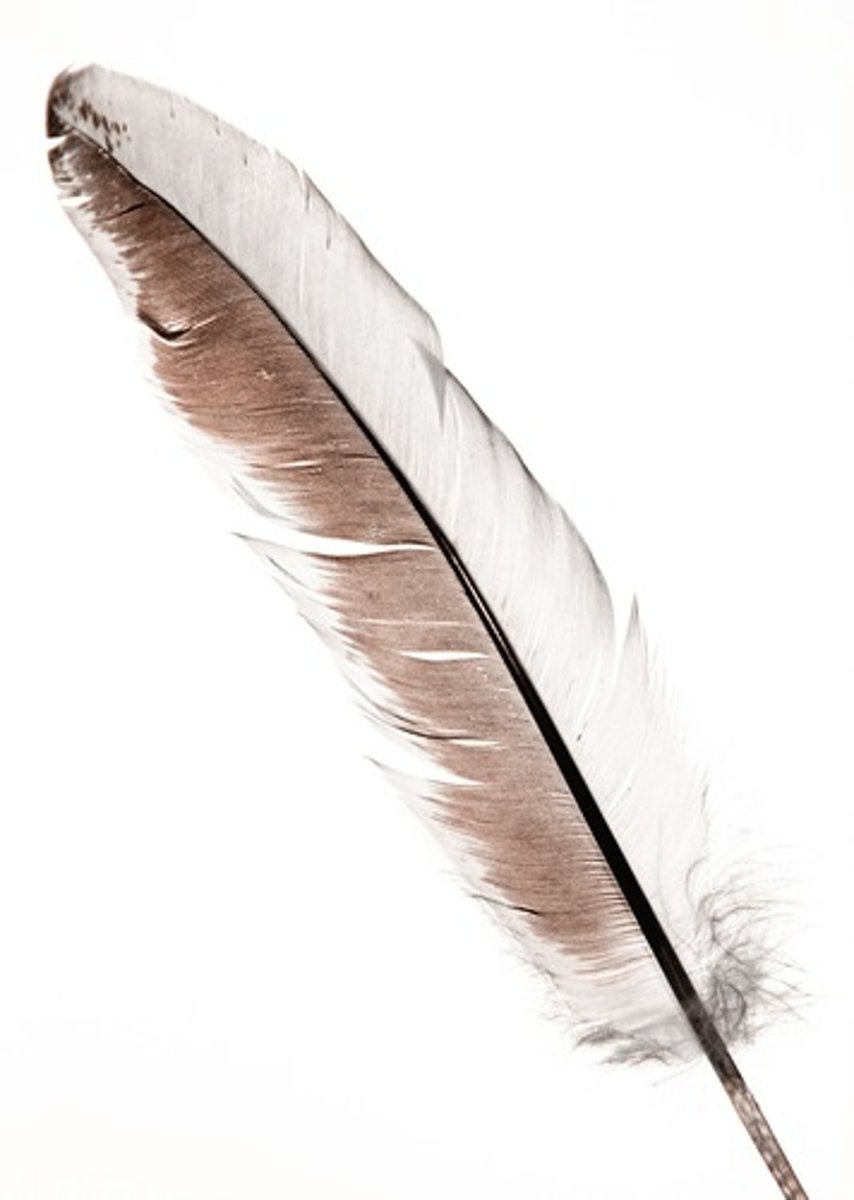
barbules
the barbs of a feather are held in place by these
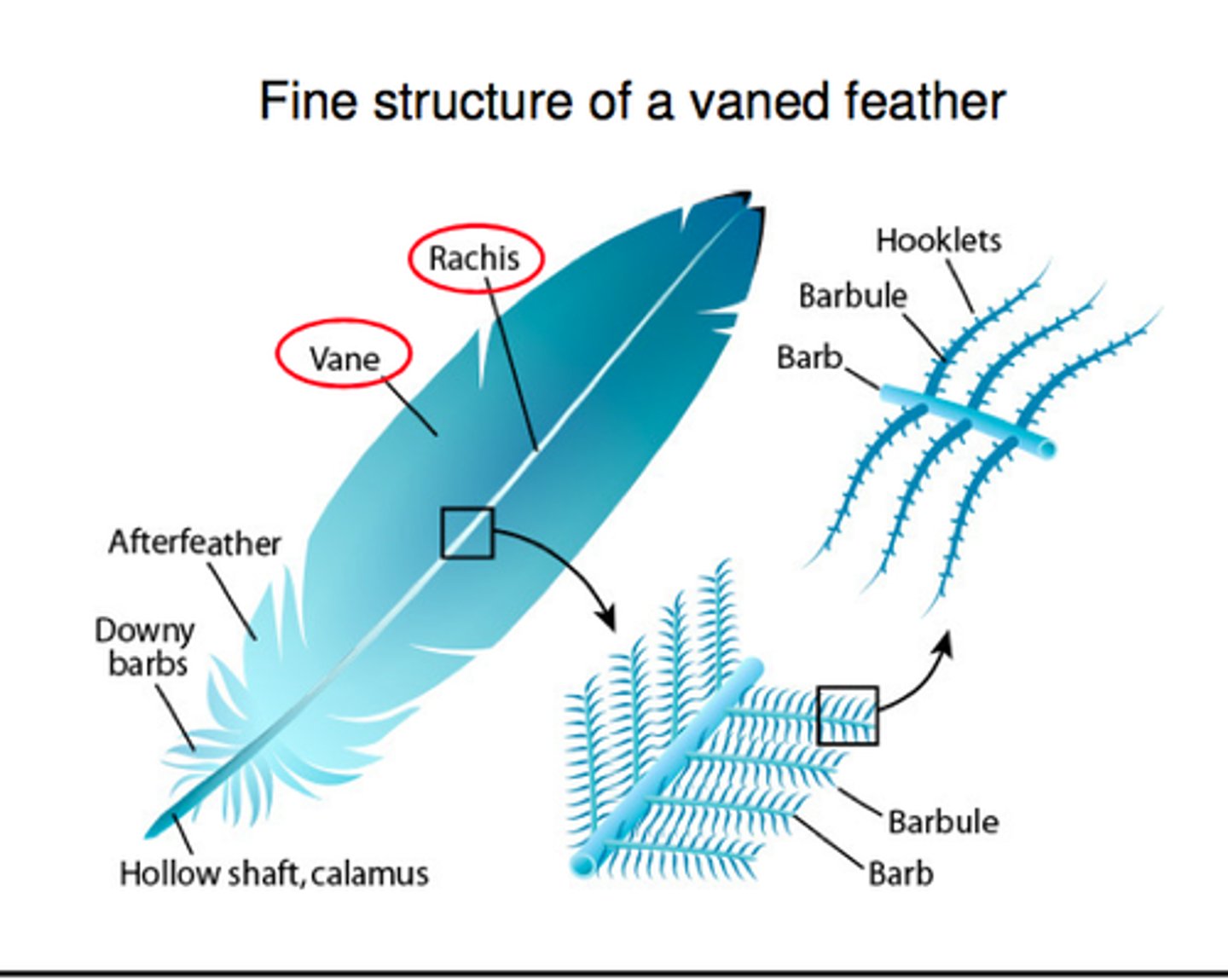
barbs
theses are the lateral branches that extend from the main shaft (rachis). They are essentially individual strands of feather materia
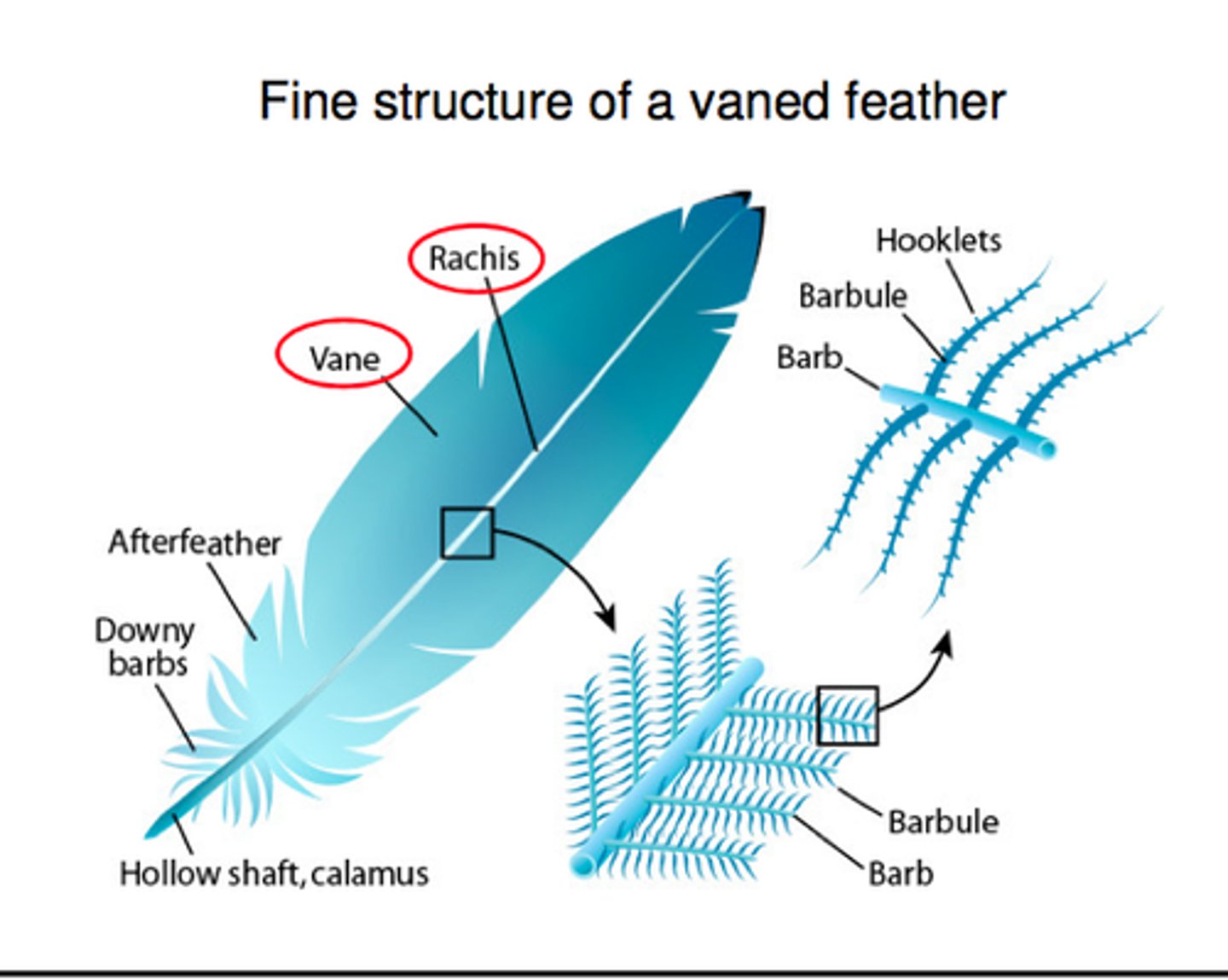
flight feathers
these are contour feathers that extend beyond the body
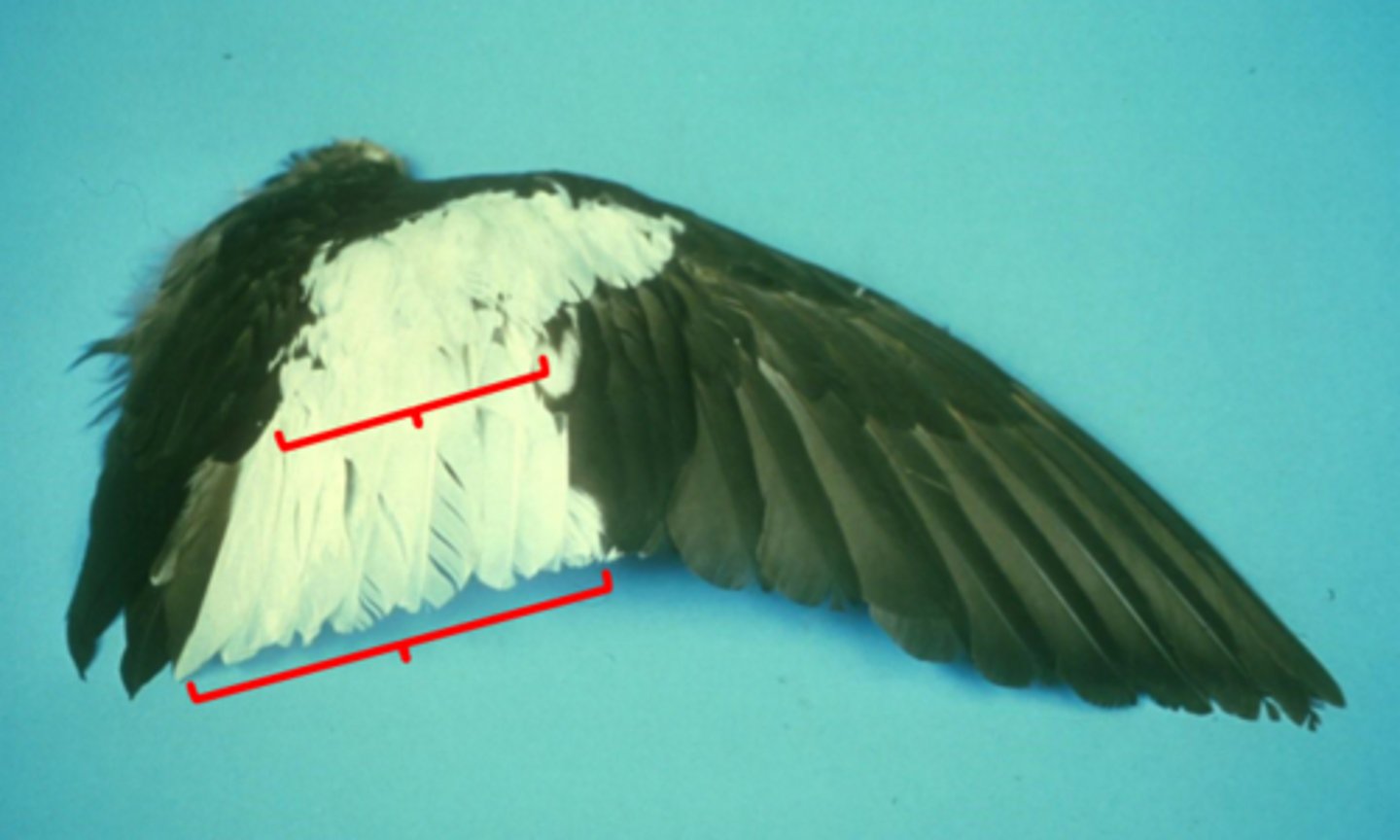
Down feathers
these are feathers w/ no prominent rachis and no hooks or barbules
-conserve heat
-eg geese
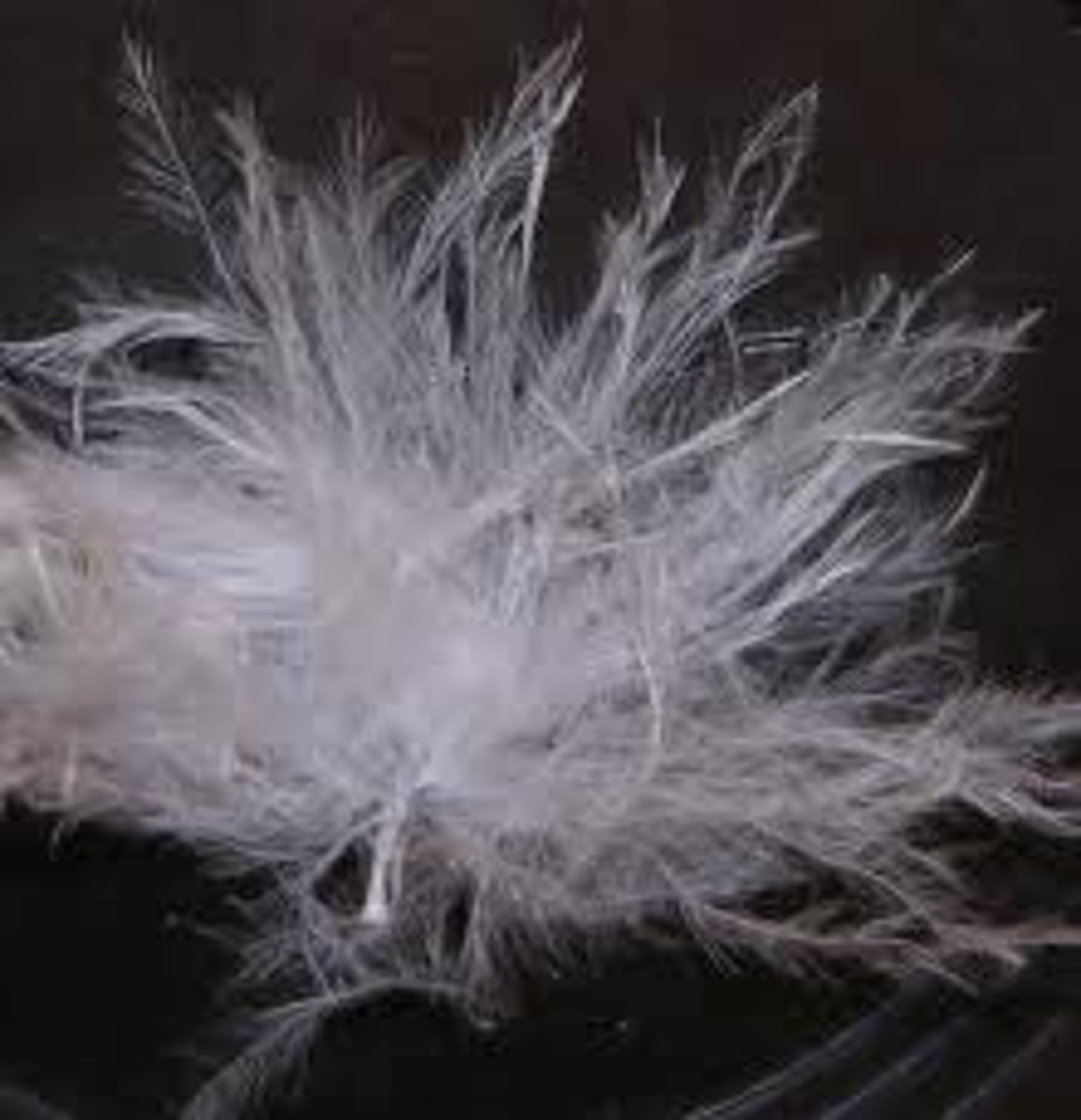
filoplumes
fine, hair-like feathers with a few short barbs or barbules at the tip. They are sensory structure that aid in operation of other feathers.
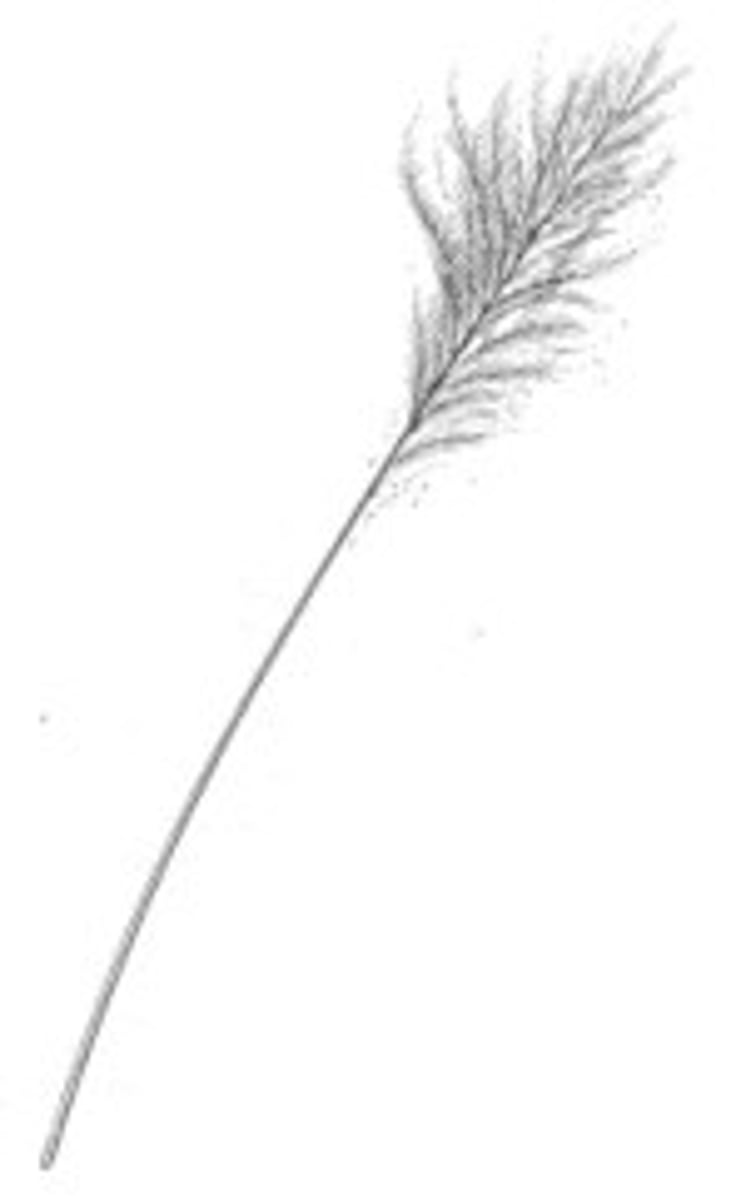
supracoracoideus
this muscle raises the wing
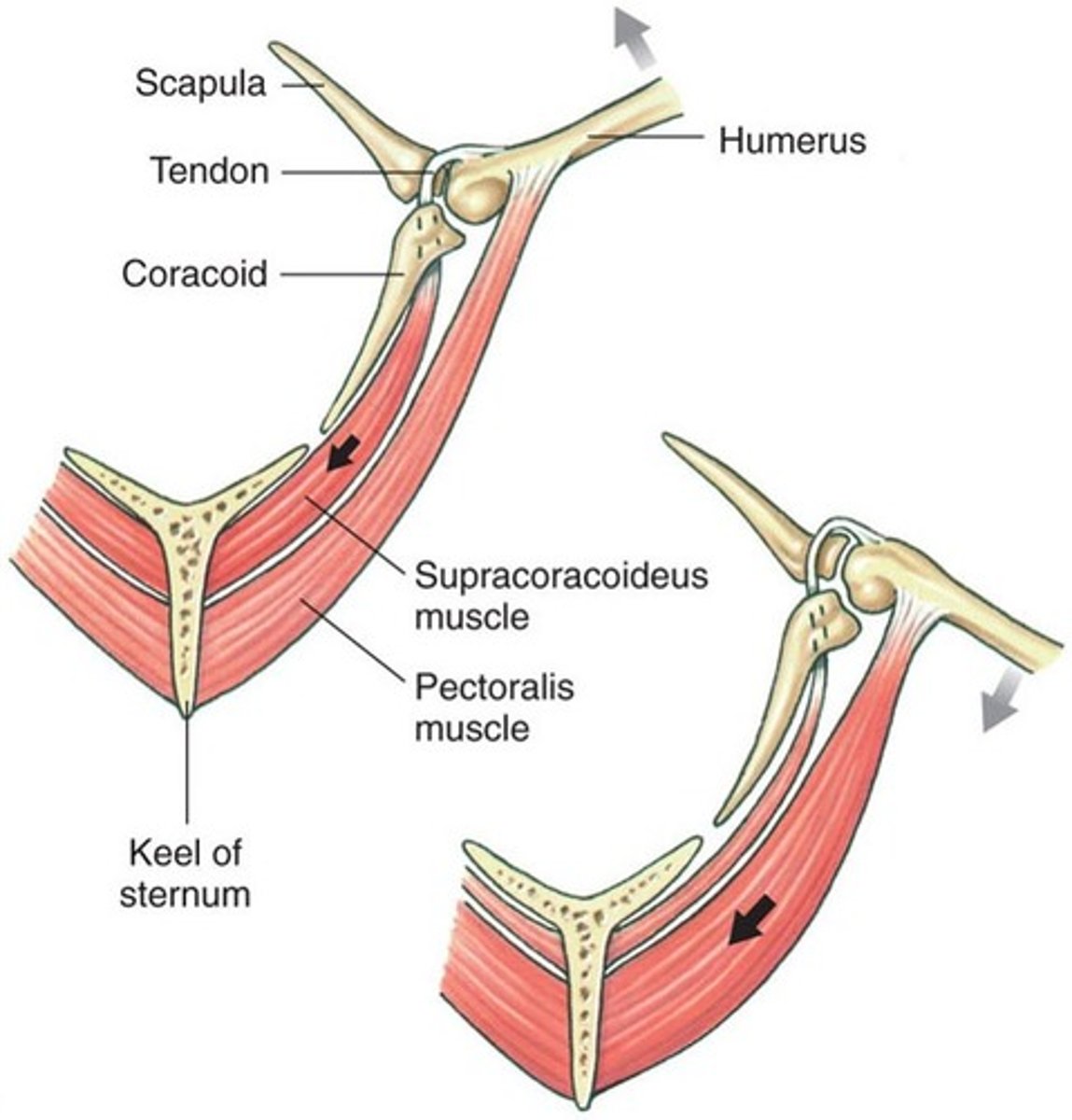
Pectoralis
this muscle depresses the wing

Perching tendon
this automatically tightens to close the toes down around a perch
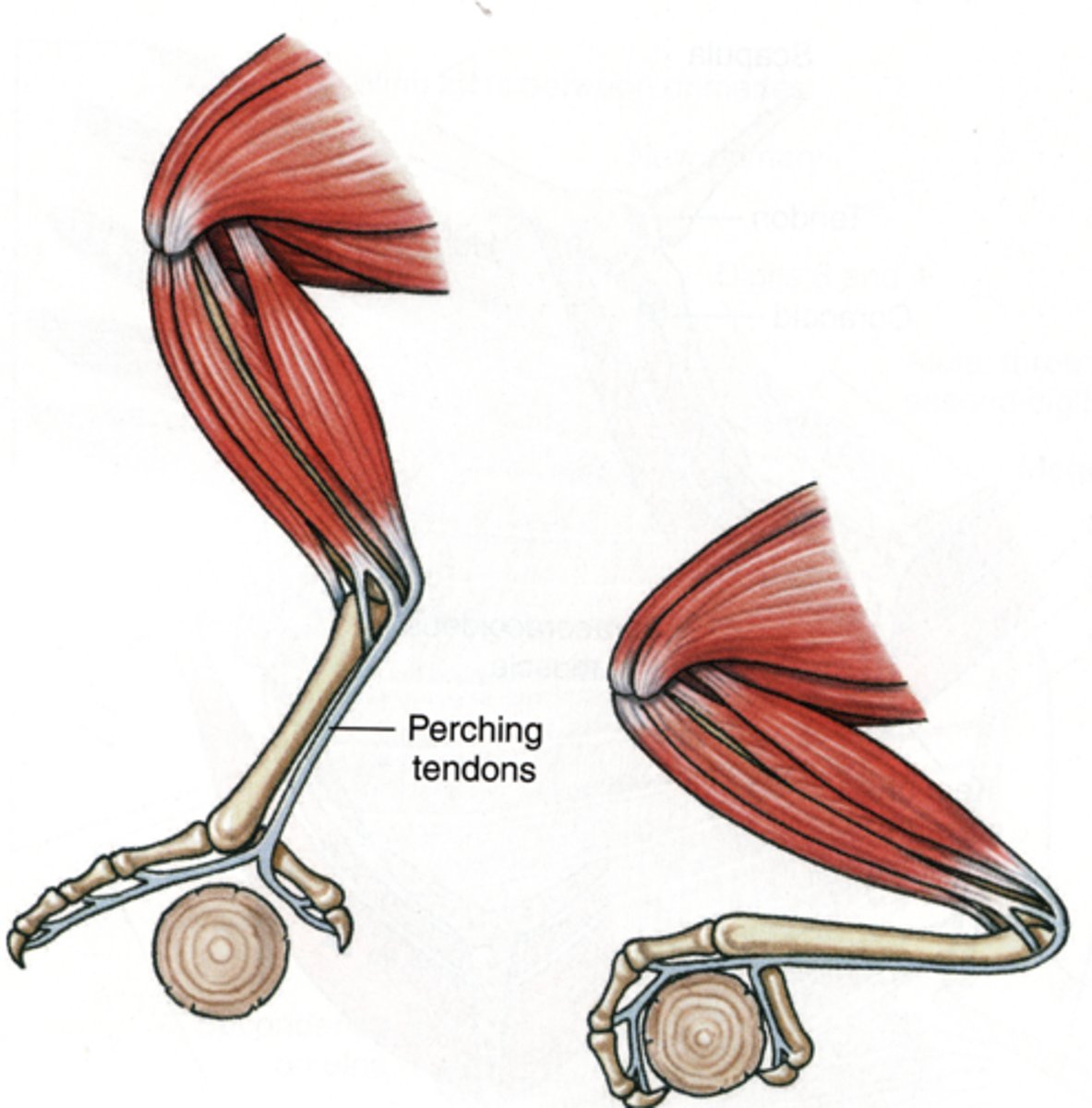
Parabronchi
A site of gas exchange in bird lungs. this allows air to flow past the respiratory surface in just one direction.

air sacs
Tiny thin-walled pouches in the lungs where oxygen enters the blood and carbon dioxide leaves the blood.
-was found in dinosaurs

What excretory system do birds have?
birds ___ by metanephric kidneys in the form of uric acid
-salt glands may supplement kidneys in marine birds

reproductive system (birds)
birds have ovaries (on left side) which enlarged during reproductive season
-internal fertilization
What vertebrates are responsible for flight evolution?
1. pterosaurs
2. bats
3. birds
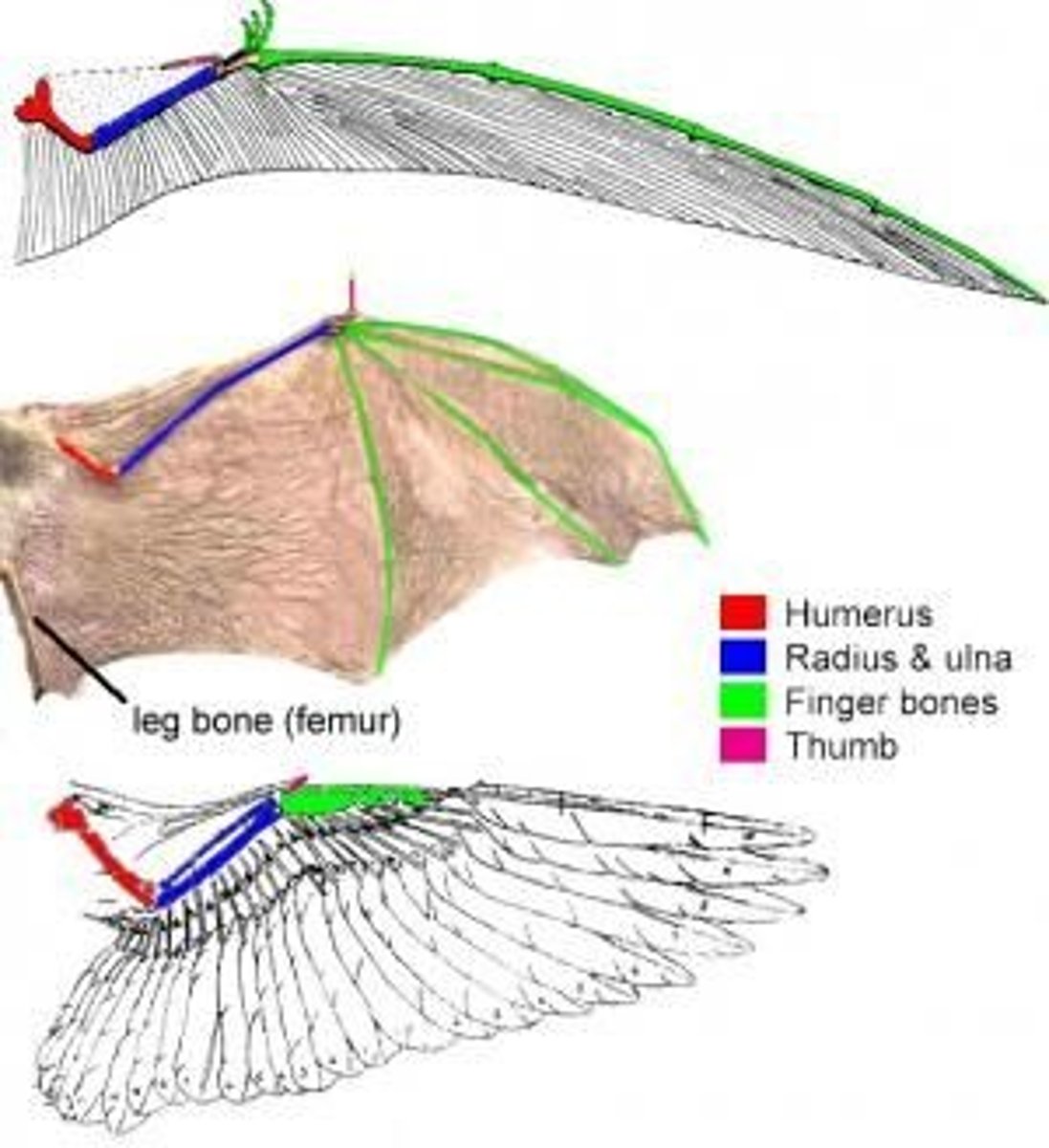
wing assisted incline running
Evidence from modern birds capable of flight indicates use of wing-flapping for running up steep inclines
-proposes that wings developed their aerodynamic functions as a result of the need to run quickly up very steep slopes such as tree trunks, for example to escape from predators
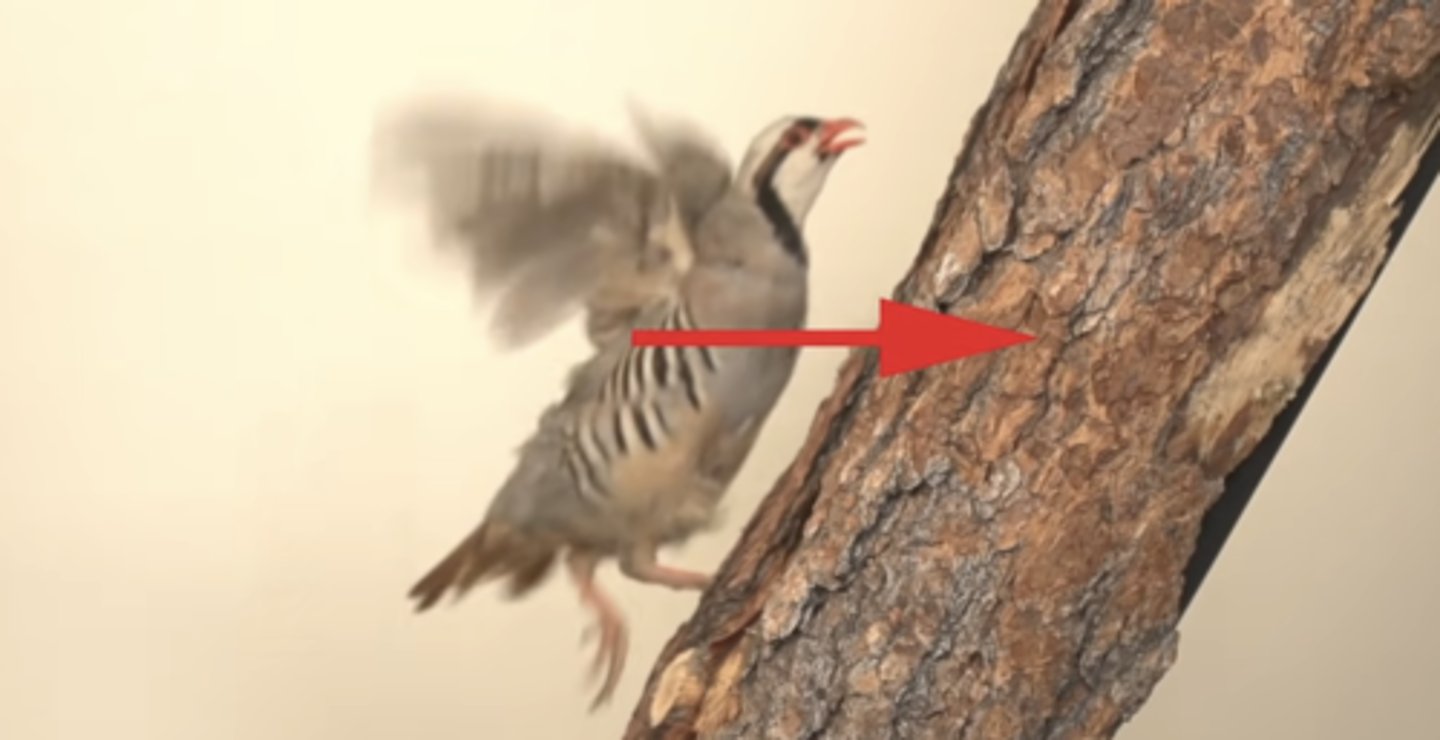
How do wings generate lift?
by angle of attack + camber
-forward thrust generated by moving down at an angle to ground

Elliptical wings
these are short and wide and provide for quick take offs and landing; very maneuverable
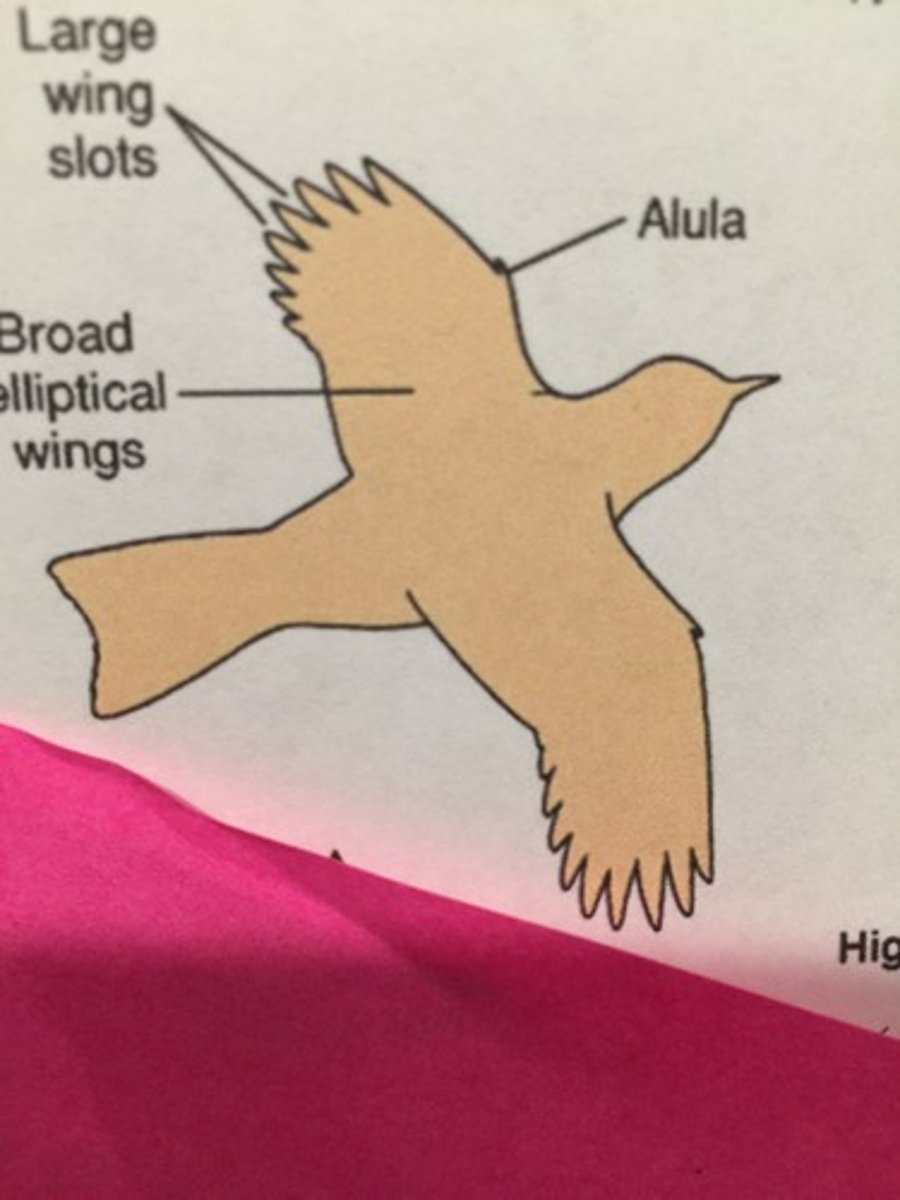
High speed wings
these have no slots
-fast level flight, birds that feed in the air or migrate
-long, thin, tapered shape that generates little drag in the air.
Ex. Swallows, swifts

dynamic soaring wings
these are used by oceanic birds that exploit reliable sea winds
-no slots
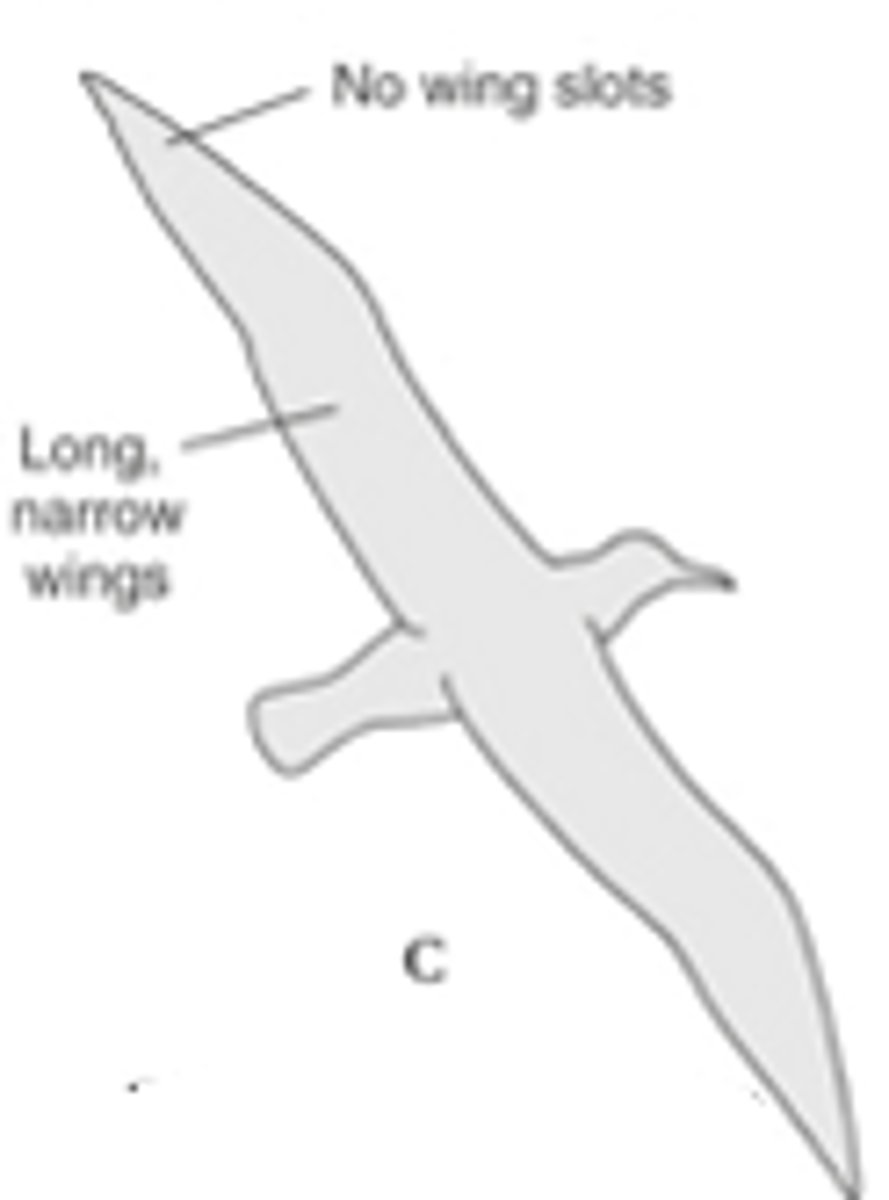
Passive soaring (high-lift) wings
These have long, broad feathers that spread out to make "slots" that let the bird catch rising warm air (called "thermals") which pushes them up higher in the sky.
-eg. eagles many species of hawks, cranes, and vultures

Polygyny
term for One male, several females.
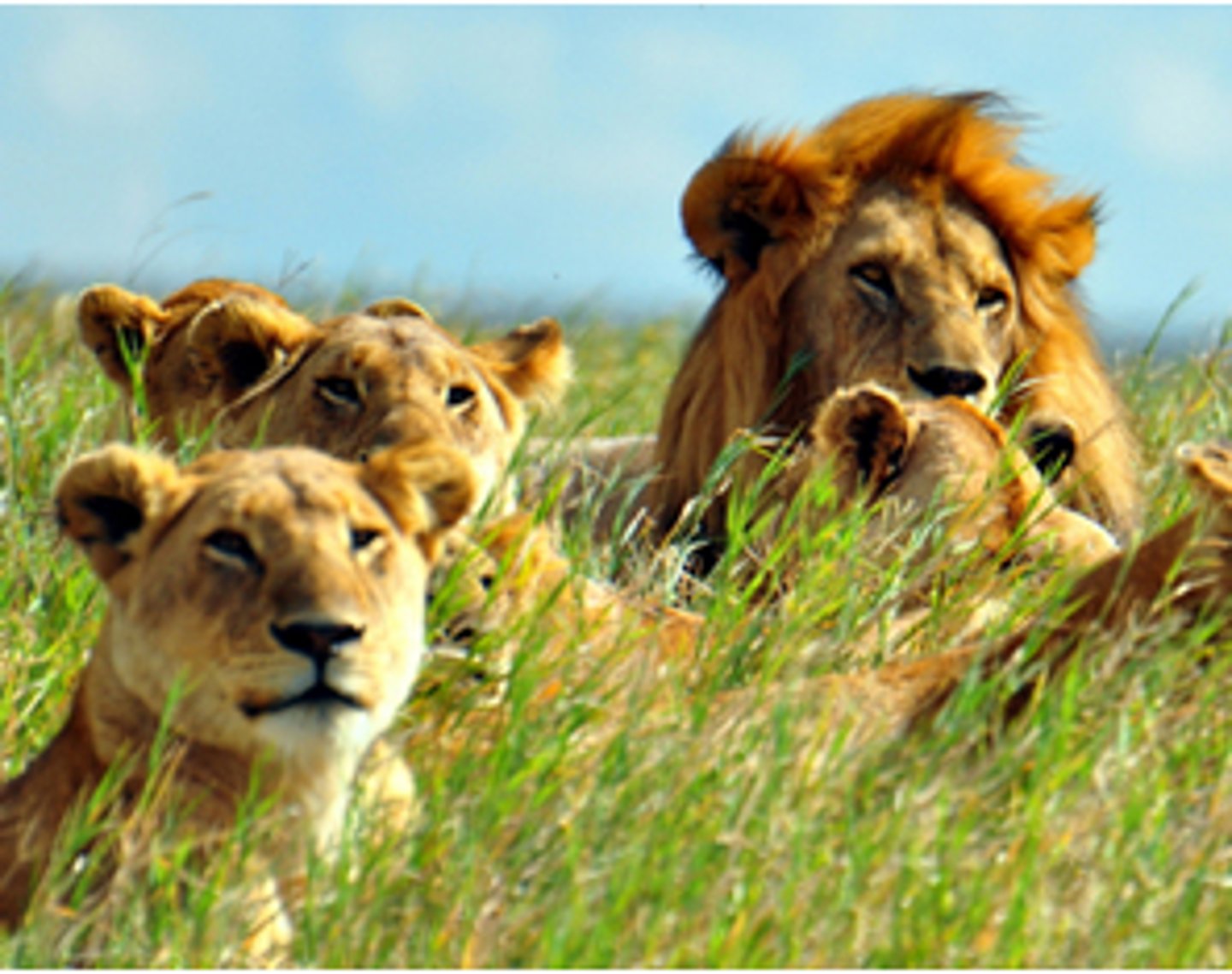
Monogamy
term for one mate
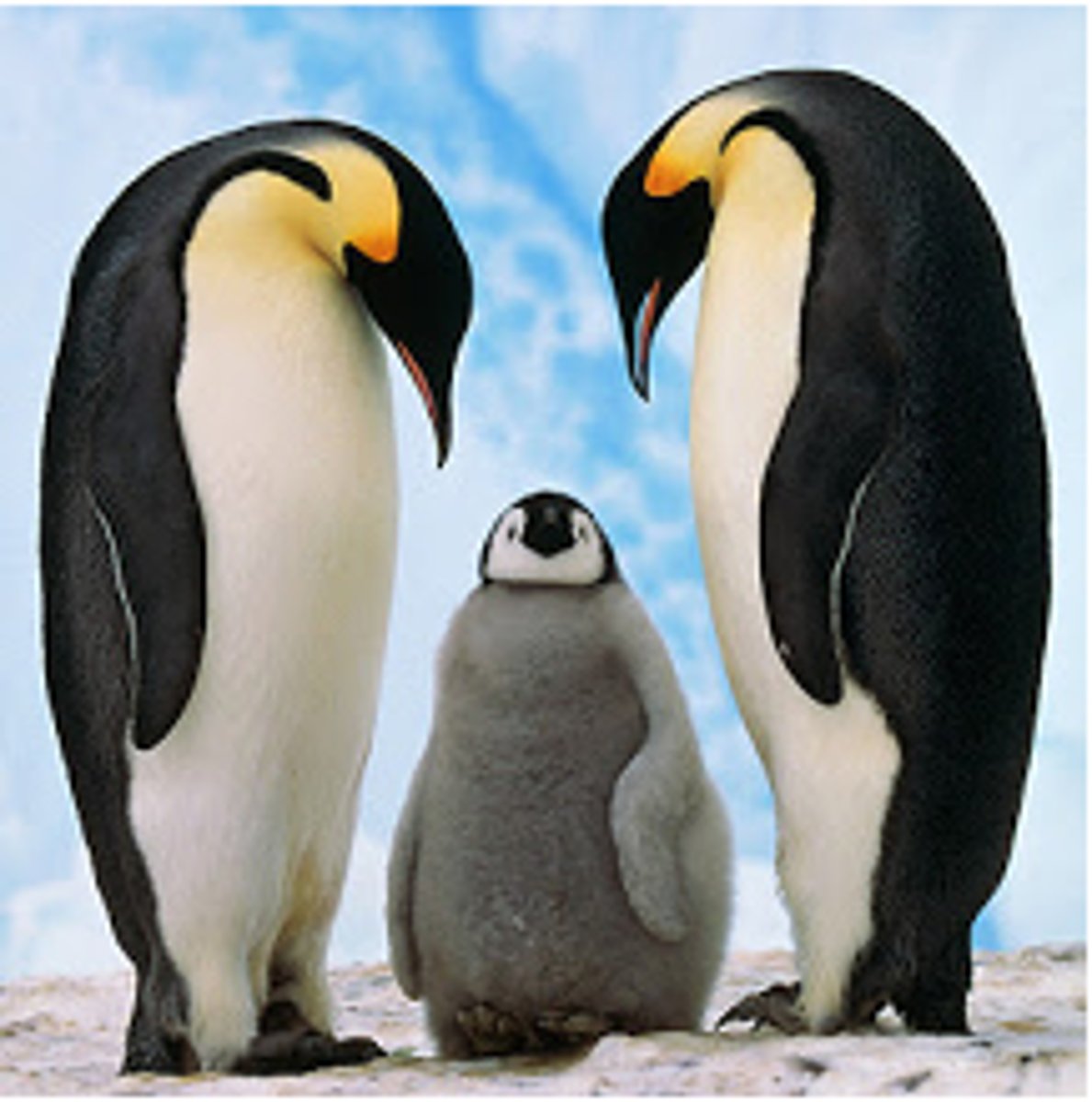
Polyandry
One female, several males.

important bird species alive/dead
extinct:
-Dodo
-Carolina Parakeet
-Passenger pigeon
-Great Auk
Invasive:
-house sparrow
-starlings

What are some causes for bird population drops?
causes:
-deforestation
-pesticides
-invasive species
-lead poisoning
-housecats
